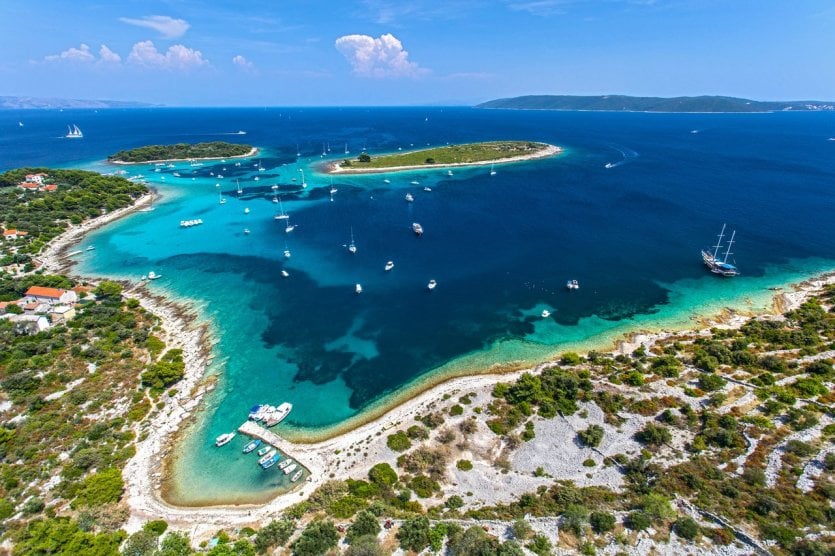
For almost a decade, Croatia has been one of Europe's most popular destinations. It must be said that its assets are many. Nearly 1,244 islands (including about 60 inhabited islands), a warm sea in summer, quieter and more crystalline than elsewhere, and superb coves on the sea side. On land, national parks have something fantastic too, with the majestic mountain, rivers in the hollow of the great canyons, waterfalls, lakes, mysterious chasms. Not to mention the architectural splendours. From north to south, monasteries and churches, castles and palaces, ramparts, fortresses and elegant squares. And to escape the crowd, here is our Top 10 spots that go off the beaten track
Trogir
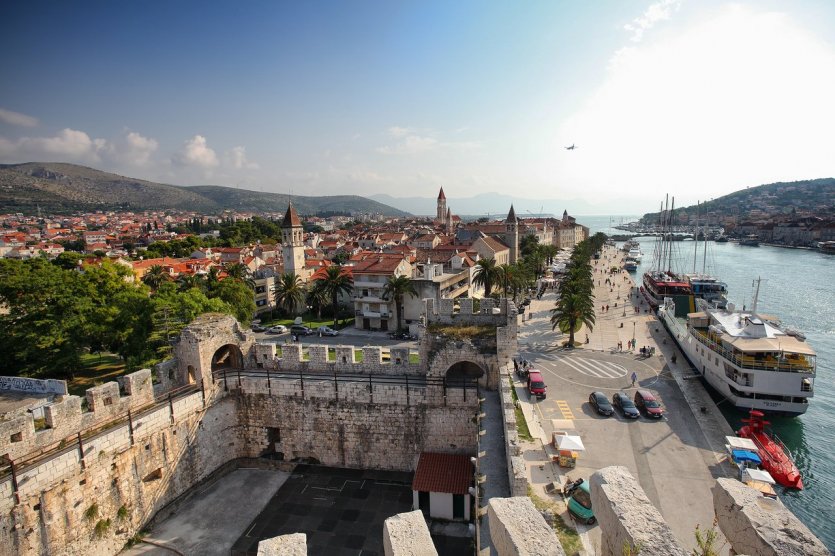
The port city of Trogir is located on an island, between the gentle hills of the mainland and another island, Čiovo, which is the most modern part of Trogir. In any case, it is one of the most beautiful cities in the Adriatic which preserves a very harmonious historic centre, listed as a UNESCO World Cultural Heritage Site. In short, a very photogenic architectural ensemble, between the silhouette in a cavalier view with its lagoon lace, the roofs and monuments in beautiful stylistic harmony, the squares and old alleys that regularly make it a cinema setting. Also not to be missed is the excursion to the island of Drvenik Veli, which brings back the pleasure of the island's calm
Smiljan
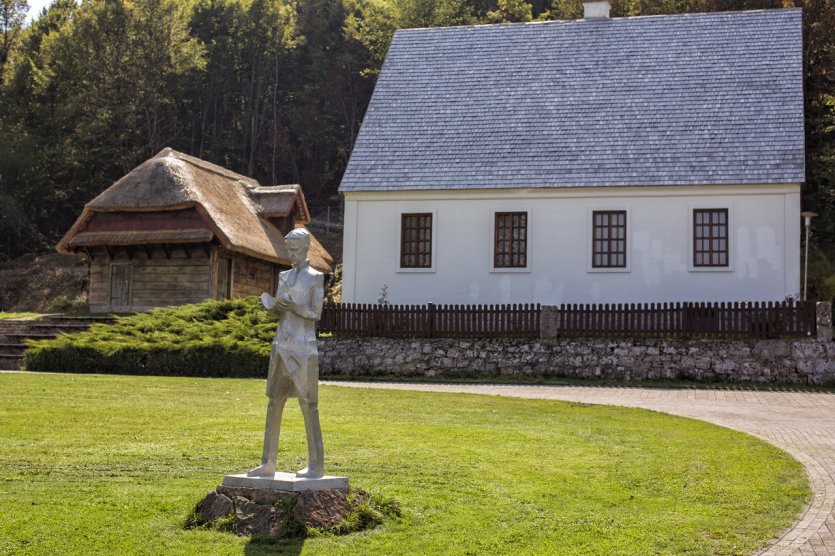
It will also be necessary to visit the village of Smiljan to pay tribute to Nikola Tesla, a great 19th century scientist, at the origin of alternating current electricity, robotics and its many applications. In short, a genius who lived in the village and had his hour of glory before falling into oblivion. In 1884, the researcher emigrated to the United States where he was hired by Thomas Edison, who also worked in this field. Very quickly considering him as a competitor, he began to denigrate his Croatian collaborator. In 1943, he died alone in Manhattan. The museum dedicated to him in Smiljan shows the sum of his works which, despite their ingenuity, could not be patented.
Motovun
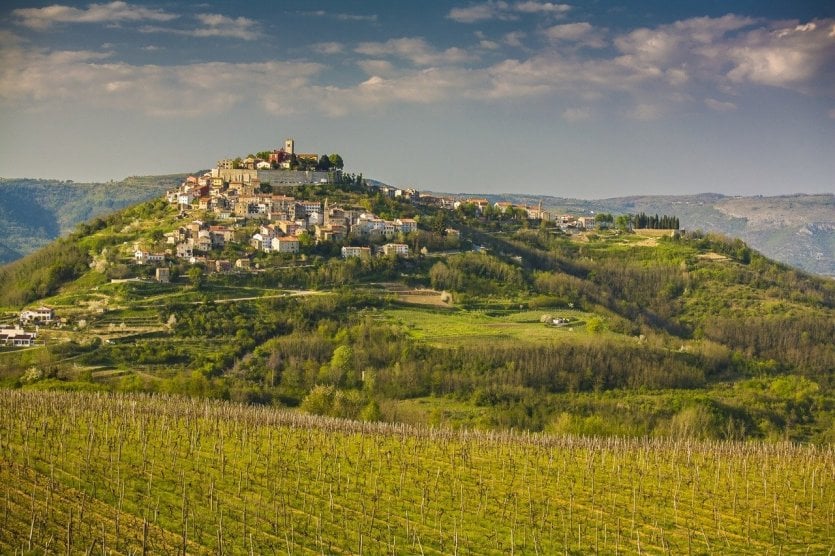
This is one of the most beautiful medieval cities in the hinterland of Istria! Built in the 14th century, on the top of a hill, Motovun was for a long time a rich Venetian village. Its hillside vineyards produce the best wines in the region, while in the surrounding forest connoisseurs find beautiful white truffles. In the centre, as you walk around the ramparts, walking along cobbled streets, you will discover churches, squares, palaces and loggias. She has developed her art craft, local gastronomy and the plastic arts. The medieval city attracts many painters and sculptors, who exhibit in small galleries and shops.
Rijeka
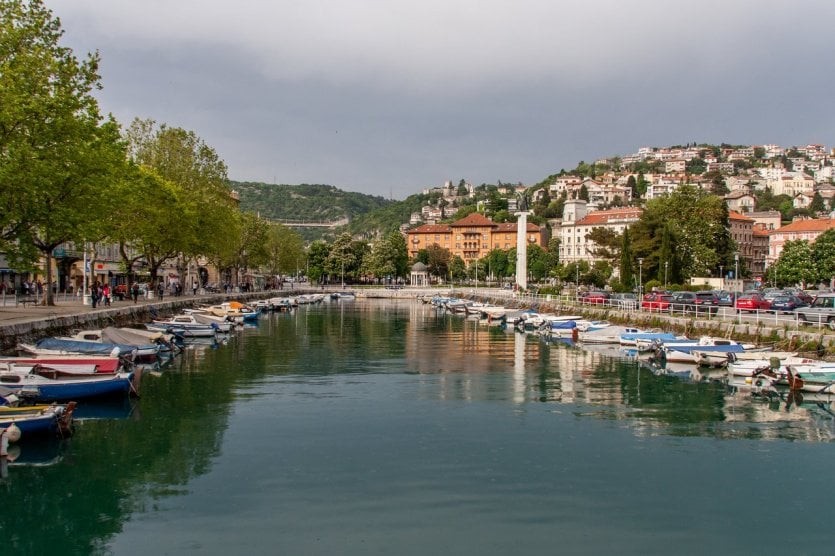
Rijeka deserves more than one step. It is not a seaside resort with its pedestrian streets and terraces. Its large central square, its religious treasures, its Austro-Hungarian villas built at the end of the 18th century and at the beginning of the 19th century, its imposing bourgeois buildings, its cultural heritage, are surprising. First port of Croatia, Rijeka seems to live mainly to the rhythm of its large markets and the main pedestrian street, the Korzo, is lined with shops. Finally, Trsat Castle overlooks the city and you can climb the 500 steps to admire the panoramic view of the surroundings, the Gulf of Kvarner and its archipelago and the three nearest large islands: Krk, Cres and Mali Lošinj. Unique!
Varaždin
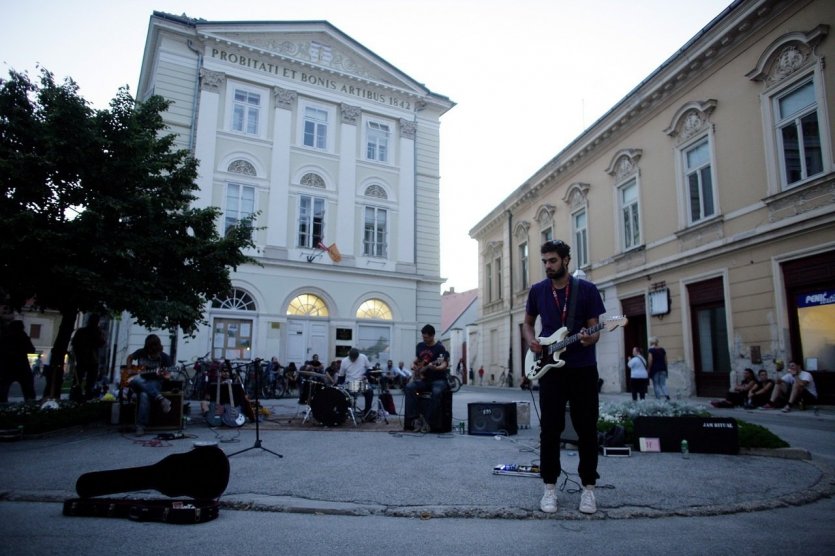
80 km northeast of Zagreb, on the other side of the Medvednica mountain range, Varaždin is a superb Baroque city, whose palaces in the old town were miraculously spared by the many conflicts in the region. A romantic place to be! This rich heritage attracts thousands of visitors and also displays its artistic dynamism. Nicknamed the Little Vienna, many aristocrats settled there in the 18th century and the elegant city had in its time its worldly fame. Today, it is possible to push the door of the cathedral and many churches, which regularly host early music concerts. And at the end of August, the Špancirfest, the country's largest street festival, takes place. A festive and offbeat event with a rich musical programme.
Cavtat
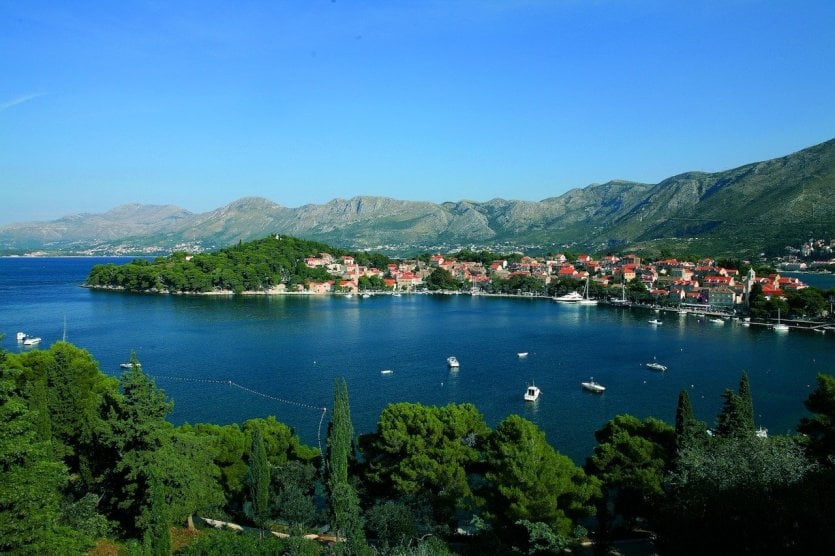
About twenty kilometres from Dubrovnik, Cavtat is built on the Rat Peninsula between two very pleasant bays, Luka and Uvala Tiha, which face the island of Supetar. This small port town has now become a highly regarded seaside resort, the most important on the Riviera itself, after the mythical Dubrovnik. In the far south of Croatia, the microclimate of Cavtat favours subtropical vegetation and many excursions are also possible from the seaside city. We will therefore happily head for the Elaphite Islands, Dubrovnik, Molunat, the hinterland of Konavle.
Skradin
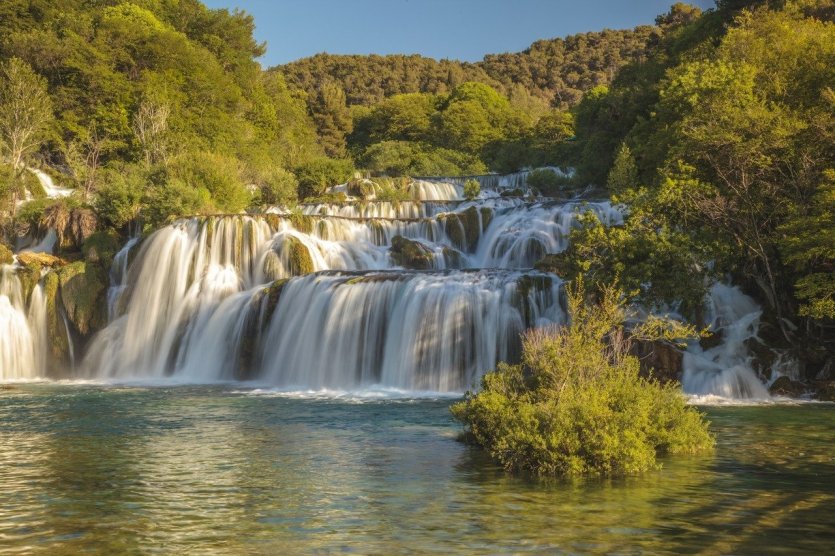
Krka National Park is one of the most beautiful nature reserves in Croatia. If many tourists visit during the day, the ideal is to organize a stay of a few days on site, in Skradin for example. A break that will allow you to get as close as possible to the different sites of the park, to discover the diversity of the landscapes and its cultural heritage. Skradin remains the closest locality to the waterfalls and a green stopover all found in the area. In this real seaside resort on the river, you can feel a certain art of living, to the rhythm of the boatmen who rotate on the river, and it is very pleasant to consider a prolonged stopover
Nin
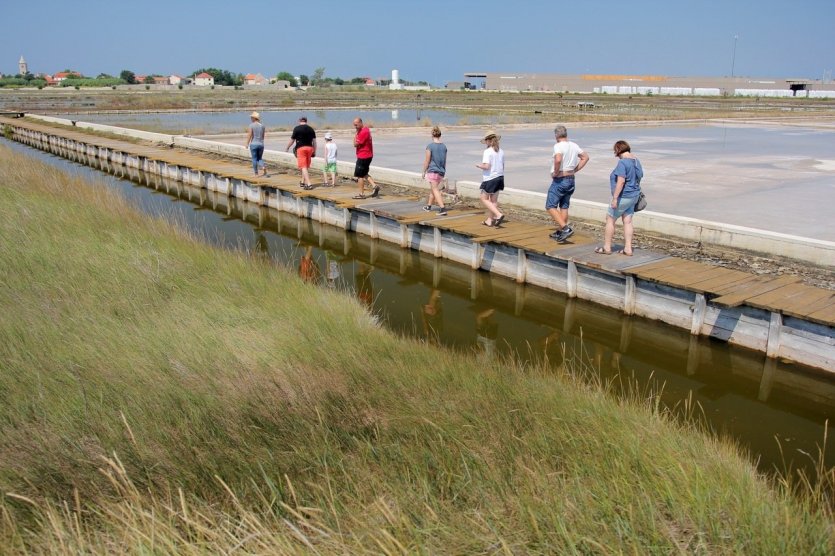
15 km north of Zadar, Nin is a pretty historical village and an ideal base for those who wish to enjoy the seaside pleasures with their families. Because it is here that the largest sandy beach in Croatia is located for no less than 3 km. Nin, this former Liburnian colony which was urbanized by the Romans under the name of Aenona, also has a very rich cultural heritage. Like the other ancient coastal cities, it was invaded from the 7th century onwards by the Slavs and Avars, who devastated it almost entirely. Under the rule of the Croatian kings, Nin slowly resumed its development, becoming one of the first royal capitals from the 9th century onwards.
Kopački laughs
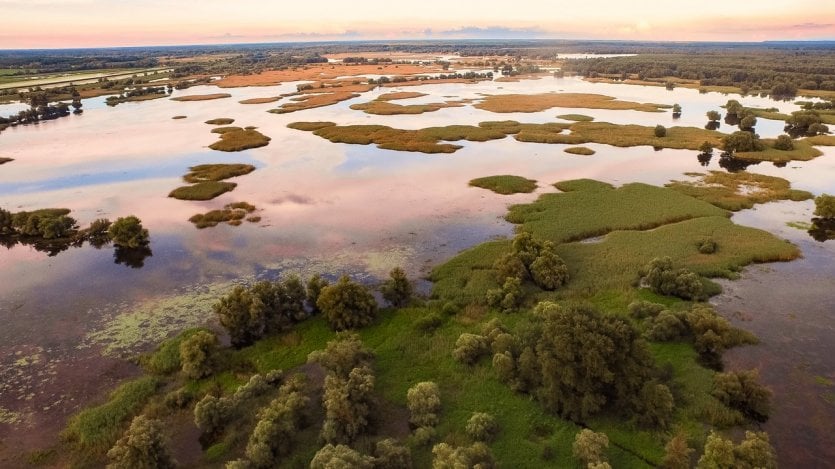
In 1993, the Kopački rit Nature Park was listed as a Wetland of International Importance and is one of the largest freshwater areas in Europe. Over some 23,000 ha, it is home to more than 291 bird species and 44 fish. The humidity of the site, due to the presence of watercourses, is conducive to animal diversity. Migratory birds, attracted by fish, are also abundant in early fall. Along the water, we meet a lot of cormorants, herons, but also terns, kingfishers, wild ducks.... And there are also some rare species in Europe, such as the black stork
Samobor

20 km from Zagreb, the small town of Samobor, dominated by 13th century fortifications, is a pleasant getaway in all seasons. Its joyful February carnival takes place in the beautiful central square, lined with large bourgeois houses from the 18th and 19th centuries. Renowned for its surrounding hiking trails, picnic areas, traditional cuisine and pastry, it offers some good restaurants and gourmet products. For example, you should taste the samoborska kremšnita cake with a glass of Bermet, the local aperitif (a wine flavoured with herbs), which is made only in the region. Cheers!


